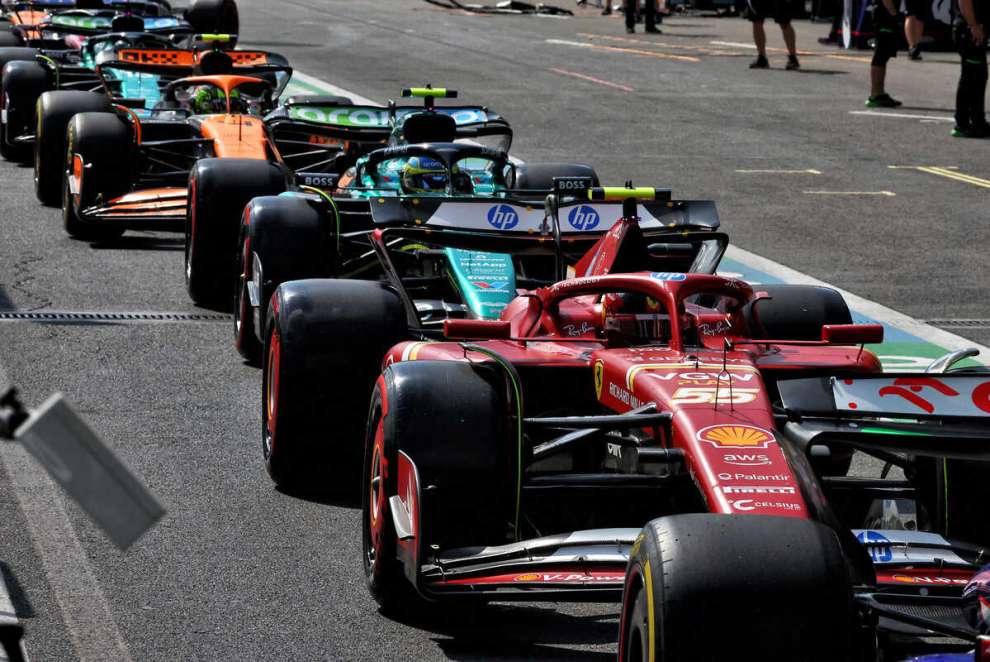By Carlo Platella
Even without the victory, the one in Baku remains one of the best performances of the season for Ferrari for the qualities expressed by the car, for the preparation and for the execution of the weekend. At the same time, however, the excellent Azerbaijani weekend raises perplexity about the projects of the Prancing Horse cars of recent years. If the world championship drought in Maranello continues to extend, it is also due to single-seaters that give their best on the types of tracks that are less frequent on the calendar.
City red
There is a fact that makes you think about the latest Reds to come out of Maranello. From 2021 to today, between Monte Carlo and Baku, Ferrari has achieved 8 pole positions out of 9 qualifying sessions, including one valid for the Sprint. Including Singapore, in the last 4 years the Prancing Horse has obtained 9 pole positions in 11 qualifying sessions on city tracks dominated by short, slow and ninety-degree curves. Charles Leclerc contributes to this particular statistic, among the best interpreters of the dry lap when it comes to racing between the walls. The Monegasque’s ability, however, is not the only motivation.
In the same circumstances, in fact, Carlos Sainz often proves competitive, sometimes even ahead of his teammate. The many pole positions achieved in the city are a reflection of the car’s undoubted technical merits, including the excellent suspension group, capable of absorbing the roughness of the asphalt well at low speeds. Added to this is the power unit, with good torque delivery in traction. However, the statistic is also a symptom of a recurring design philosophy of Ferraris in recent years.
Choosing the objectives
When the best performances in the season are concentrated on street tracks, it is not an indication of a car capable of fighting everywhere. For years, Ferraris have shown certain characteristics that are to the detriment of other qualities, potentially more rewarding over the course of the championship. In fact, during the design phase, it is impossible to focus on every area of performance. Between long or short curves, between high, medium or low speed, between high or low aerodynamic load, it is necessary to set objectives, choosing which behaviors and which configuration to enhance. In technical jargon, this is model the aerodynamic mapwhich describes the load trend, efficiency, balance and other aerodynamic figures in various conditions. In support there is also the study of the suspensions, designed to enhance certain characteristics.
The philosophy that emerges from Ferraris in recent years is that of cars with a well-planted rear end at low speeds, ensuring traction and therefore good recovery when exiting slow corners. Good reactivity also emerges in changes of direction, with cars that support the driver when entering corners, but lacking in stability when travelling. With the introduction of new circuits, the calendar has recently become increasingly varied in terms of the type of tracks present. The cars that have won the World Championship, however, continue to excel in the medium-high speed and long-distance curves, which are predominant on European tracks that emphasize stability and aerodynamic load, as well as good balance at all speeds. It also happens that the same world championship cars also win on street circuits, but not at the cost of less competitiveness on the rest of the calendar.

Transformation in progress
Paradoxically, Ferrari’s fourth consecutive pole position in Baku invites reflection. Perhaps in Austin the Prancing Horse could prove its critics wrong, proving itself equally competitive on every track. At the moment, however the Red continues to inherit the common DNA to the cars of recent years, intrinsic to the character of the car. There is a specific design vision behind it that transcends the regulations, with similar strengths and weaknesses also identifiable in the Ferraris prior to 2022 and therefore to the current regulations.
For years, riders’ comments have highlighted poor stability and a general intolerance for long-distance, medium-speed curves. Repeatedly Budapest, Zandvoort and Barcelona prove to be difficult tracks for the Cavallinowhose best performances continue to come in Monaco, Baku and Singapore. The finding transcends competitiveness compared to its rivals. Even the excellent 2022 F1-75, rightly considered the best car of the first half of the season, showed less competitiveness in the same areas as the Reds that preceded and followed it.

With the 2024 project, a major transformation began in Maranello, producing a car that finally expresses itself better in the race than in qualifying. It is the result of work aimed at improving driveability, widening the operating window. The stability that was often lacking in previous projects has gained, instilling greater confidence in the drivers. Thanks to fewer corrections on the steering wheel, Ferrari has thus reduced slipping, keeping the temperature of the tyres under control, whose degradation is now lower. However, the fact that the Prancing Horse continues to give its best on the less rewarding tracks for the World Championship highlights how the philosophical transformation, design-wise, is still incomplete. A Loic Serrarecently appointed as technical director, the task of completing it.
#Ferrari #queen #citizens #title #missing #win

